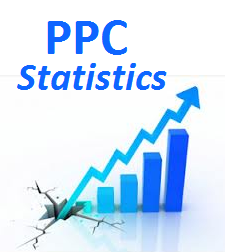As all PPC advertisers will know, changing different statistics in pay per click advertising will ultimately result in their adverts being advertised on different publisher websites. Therefore, it could be seen that advertisers have quite a strong control on specifically what  type of websites they advertise on. Yes, there is the obvious that changing keywords will change the type of websites you advertise on. However, once you have located that segment of websites to potentially advertise on, you can go that bit further providing your campaign extra potential success: the more linked the website is to your campaign, the better.
type of websites they advertise on. Yes, there is the obvious that changing keywords will change the type of websites you advertise on. However, once you have located that segment of websites to potentially advertise on, you can go that bit further providing your campaign extra potential success: the more linked the website is to your campaign, the better.
CPC
The cost per click used by advertisers can have a huge part in choosing specifically which websites show their adverts. For a start, the CPC a publisher achieves is affected by their website’s page rank. Therefore, point 1), the higher the CPC, the more chance your advert will be advertised on a website with a high CPC.
Another factor that determines the CPC of a website is how well it is in bringing good traffic which will have a strong CTR and conversion rate. Advertisers are going to pay for more per click if they know there is a good chance the click will end up being a conversion. From this, here comes point 2), the higher the CPC you bid for, the better CTR and conversion rate you will get. This makes clear that websites that have a high CPC usually:
- Have a high Google page rank.
- Have a good click-through rate.
- Are able to gain successful conversions.
Impressions + CTR
The amount of impressions you gain compared to the CTR you achieve can tell you alot about the type of website you are managing to advertise on. If you find that your adverts are getting loads of impressions but are struggling to turn that traffic into clicks, you can see that the websites you are advertising on have a problem. This may be from the publisher’s perspective that their website is just not good enough where they have not much contextual content linked to your campaign. Some publisher’s websites are simply a bunch of unrelated articles on one website. How do programs such as AdWords and Adsense manage to sum up in a few keywords what the website’s main content is about when it could be many things?
Conversions
Deemed as one of the most important aspects to a campaign, it is pretty difficult to begin with to measure your campaign’s conversion rate. However, with the help of Google Analytics, you can measure your statistics easier and clearer. Once you can measure your conversion rate, you can then start to understand the type of website you are advertising on. If you are gaining a low conversion rate along with a high CTR, the website is bringing people who are not interested enough or have a short attention span. Remember that traffic from the website will have to click on the advert and then perform the action required for a successful conversion. In internet terms, that is alot of effort for someone doing it for free or even at a price. However, if you find that your campaign has a good conversion rate, you can decipher that the website you are advertising on is doing its job in bringing in healthy contextual traffic.






Graphic Design india
September 27, 2012 at 5:20 am
This upgrade will also mean that we can manage site links at ad group level instead of campaign level; and it will retain their click history when we edit them. Awesome!
John Rampton
September 27, 2012 at 1:07 pm
Exactly! Thanks for the comment! I love the click history.